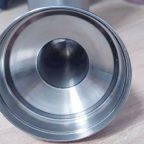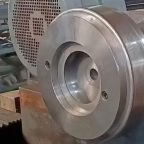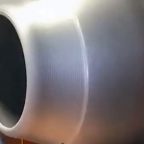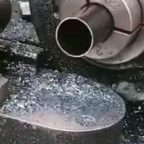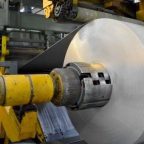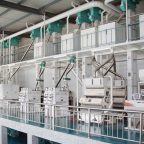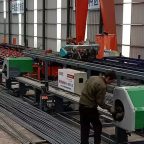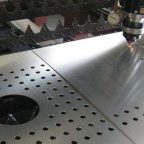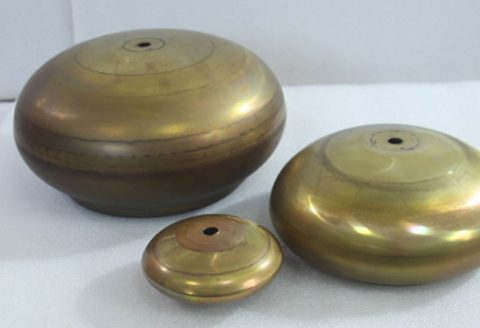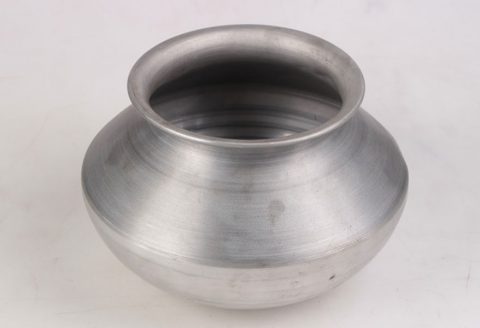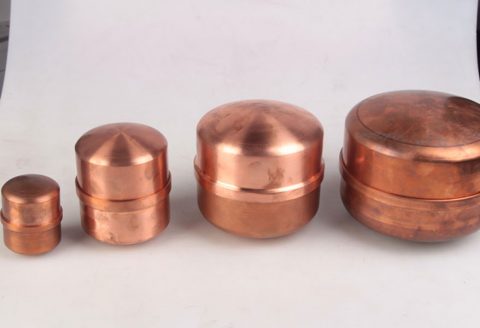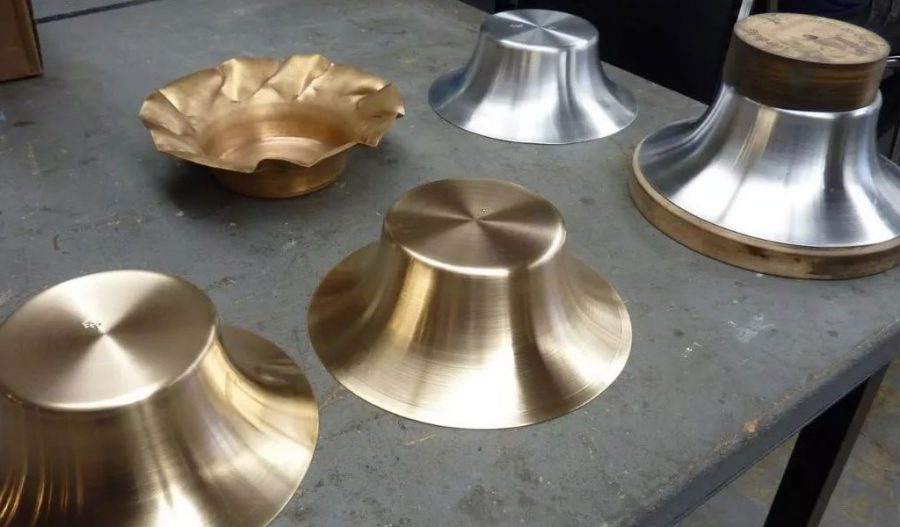
Computer Numerical Control (CNC) spinning and ultrasonic vibration-assisted forming (UVAF) represent advanced manufacturing techniques that have transformed the metal forming industry. CNC spinning, a subset of the broader metal spinning process, employs computer-controlled machinery to shape sheet metal or tubular blanks into axisymmetric components with high precision and repeatability. Ultrasonic vibration-assisted forming, on the other hand, introduces high-frequency, low-amplitude vibrations to the forming process, reducing forming forces, enhancing surface quality, and mitigating defects. These technologies, individually and in combination, have garnered significant research attention due to their applications in aerospace, automotive, medical, and other high-precision industries.
This article provides a comprehensive exploration of the historical development, theoretical foundations, technological advancements, experimental findings, and future directions of CNC spinning and UVAF. By synthesizing recent studies, the article aims to elucidate the mechanisms, benefits, and challenges of these processes, offering a detailed resource for researchers, engineers, and industry professionals. The discussion is structured into thematic sections, supported by comparative tables and references to seminal works in the field.
Historical Context and Evolution
Origins of Metal Spinning
Metal spinning, also known as spin forming, is a centuries-old manufacturing technique that involves rotating a metal blank at high speed while applying localized pressure with a roller to shape it over a mandrel. Historical records trace its origins to ancient Egypt, where artisans used rudimentary spinning techniques to craft metal vessels. By the Industrial Revolution, manual spinning had become a staple in metalworking, producing components like cookware, lamp reflectors, and musical instruments.
The advent of mechanized spinning in the 19th century introduced powered lathes, improving productivity but still relying heavily on skilled operators. The process remained an art form, with outcomes dependent on the spinner’s experience and trial-and-error adjustments. This variability limited its application in industries requiring high precision and consistency.
Emergence of CNC Spinning
The introduction of numerical control (NC) in the 1940s and 1950s marked a pivotal shift in manufacturing. Early NC machines, developed by researchers like John Parsons and teams at the Massachusetts Institute of Technology, used punched tapes to dictate tool movements. By the 1970s, the integration of digital computers led to the development of CNC systems, which offered greater flexibility and automation.
CNC spinning emerged as a natural evolution of traditional spinning, leveraging computer control to synchronize the motions of the mandrel, roller, and tool paths. This allowed for the production of complex geometries with tight tolerances, eliminating much of the operator variability inherent in manual spinning. A seminal work by Quigley and Lang (1978) highlighted the potential of CNC spinning for aerospace components, such as missile nose cones and satellite dishes, where dimensional accuracy was critical.
Development of Ultrasonic Vibration-Assisted Forming
Ultrasonic vibration-assisted forming traces its roots to the discovery of the “softening effect” by Blaha and Langenecker in 1955. They observed that superimposing ultrasonic vibrations on a deforming zinc crystal reduced the required forming force. This phenomenon, later attributed to mechanisms like acoustic softening and friction reduction, sparked interest in applying ultrasonic vibrations to various forming processes.
Initial applications focused on ultrasonic welding and machining, but by the 1980s, researchers began exploring UVAF for metal forming. Early studies, such as those by Eaves et al. (1985), demonstrated that ultrasonic vibrations could enhance material flow and reduce defects in processes like deep drawing and forging. The integration of UVAF with CNC systems in the 2000s further expanded its potential, enabling precise control over vibration parameters and tool paths.
Convergence of CNC Spinning and UVAF
The synergy between CNC spinning and UVAF emerged as a research focus in the late 20th and early 21st centuries. The ability of CNC systems to execute complex tool paths complemented the benefits of ultrasonic vibrations, such as reduced forming forces and improved surface finishes. Pioneering studies, such as those by Wong et al. (2003), investigated the application of ultrasonic vibrations to CNC spinning, reporting significant improvements in formability and dimensional accuracy.
Today, the combination of these technologies is at the forefront of advanced manufacturing, with applications in producing lightweight, high-strength components for industries like aerospace and automotive. The following sections delve into the theoretical underpinnings, experimental methodologies, and recent advancements in this field.
Theoretical Foundations
Mechanics of CNC Spinning
CNC spinning is an incremental forming process where a rotating metal blank is deformed by a roller that follows a programmed tool path. The process can be categorized into conventional spinning, shear spinning, and flow forming, each distinguished by the deformation mode and wall thickness variation.
- Conventional Spinning: The blank is formed over a mandrel without significant thickness reduction, producing parts like conical or hemispherical shapes. The process relies on compressive and tensile stresses induced by the roller.
- Shear Spinning: The blank undergoes localized shear deformation, reducing wall thickness while maintaining the blank’s diameter. This is common for conical components.
- Flow Forming: An advanced variant, flow forming involves significant thickness reduction and elongation, often used for tubular components like aerospace shafts.
The mechanics of CNC spinning involve complex interactions between the blank, mandrel, and roller. Key parameters include mandrel speed, roller feed rate, roller geometry, and blank material properties. The stress-strain state in the deformation zone is governed by the von Mises yield criterion, with plastic flow occurring when the equivalent stress exceeds the material’s yield strength.
Finite element (FE) simulations have become indispensable for modeling CNC spinning. Studies by Wang and Long (2011) used FE models to analyze stress distributions and predict defects like flange wrinkling, a common issue in conventional spinning. Their work identified two compressive stress rings in the flange region, with the outer ring being a primary cause of wrinkling. A theoretical buckling model based on the energy method was proposed, validated by experiments showing a surface roughness (Ra) of 2 μm and roundness error of 200 μm for spun cups.
Principles of Ultrasonic Vibration-Assisted Forming
UVAF introduces high-frequency (typically 20–60 kHz) and low-amplitude (5–50 μm) vibrations to the forming tool or workpiece. These vibrations induce several effects that enhance the forming process:
- Acoustic Softening: Ultrasonic vibrations reduce the material’s flow stress, akin to thermal softening, by altering dislocation dynamics. This is attributed to the absorption of ultrasonic energy by lattice defects, as proposed by Langenecker (1966).
- Friction Reduction: Vibrations decrease contact friction between the tool and workpiece, often modeled using a reduced Coulomb friction coefficient. Abdo and Tahat (2008) reported a decrease in friction coefficient with increasing vibration frequency and amplitude.
- Surface Effect: Vibrations improve surface quality by reducing adhesion and built-up edge (BUE) formation on the tool. This is particularly evident in ultrasonic-assisted turning, where microchip particles are minimized.
The ultrasonic system typically comprises a generator, transducer, horn, and forming tool. The generator converts electrical signals into high-frequency oscillations, which the transducer transforms into mechanical vibrations via the piezoelectric effect. The horn amplifies these vibrations, delivering them to the tool or workpiece.
Theoretical models for UVAF often combine continuum mechanics with vibration dynamics. Yao (2016) developed a barrel compression model to evaluate friction reduction in ultrasonic-assisted compression, showing a 23–47.6% reduction in forming forces compared to conventional methods. The model incorporated finite element simulations to correct compressive stress predictions, validated by experiments on pure titanium.
Synergistic Effects in CNC Spinning with UVAF
The integration of UVAF into CNC spinning enhances process efficiency by combining the precision of CNC control with the material and friction benefits of ultrasonic vibrations. The primary synergistic effects include:
- Reduced Forming Forces: Ultrasonic vibrations lower the forces required to deform the blank, enabling the spinning of harder materials like titanium alloys.
- Improved Dimensional Accuracy: Vibrations mitigate springback and wrinkling, as demonstrated by Xie et al. (2018), who reported a springback reduction to 0.15 mm in CNC spinning with UVAF.
- Enhanced Surface Quality: The surface effect of UVAF reduces roughness and defects, with studies showing improvements of 25–50% in surface finish compared to conventional spinning.
These effects are governed by the interplay of vibration parameters (frequency, amplitude) and CNC parameters (feed rate, spindle speed). The contact ratio model, introduced by Zhang et al. (2020), quantifies the intermittent contact between the roller and blank, providing a theoretical basis for optimizing vibration parameters.
Experimental Methodologies
CNC Spinning Experiments
Experimental [Ideal Response] Experimental studies on CNC spinning focus on optimizing process parameters to achieve high-quality spun parts. A notable study by Razavi et al. (2018) retrofitted a conventional lathe into a CNC spinning machine, achieving a surface roughness of 2 μm and roundness error of 200 μm for aluminum cups. The setup used a 7.5 kW spindle motor and a feed ratio of 0.6 mm/rev, with seven spinning passes.
Key experimental variables include:
- Mandrel Speed: Typically 200–1200 RPM, influencing deformation rate and heat generation.
- Roller Feed Rate: Affects contact time and stress distribution, with optimal values around 0.6 mm/rev.
- Number of Passes: Multiple passes reduce residual stresses and improve accuracy, though excessive passes increase cycle time.
Defects like flange wrinkling and cracking are common challenges. A study by Chen and Wang (2021) used FE simulations and experiments to investigate severe flange wrinkling, proposing a double-curved surface buckling model. The model predicted wrinkling onset with 85% accuracy, validated by experiments on hemispherical parts.
Ultrasonic Vibration-Assisted Forming Experiments
UVAF experiments typically involve compression, deep drawing, or spinning setups with ultrasonic systems. Liu et al. (2018) conducted ultrasonic-assisted compression tests on copper cylinders, observing an inverted drum shape at 1.8 kW ultrasonic power. The softening effect reduced forming forces by up to 30%, with geometry changes attributed to vibration-induced material flow.
In ultrasonic-assisted deep drawing (UADD), Malekipour and Sharifi (2023) reported a 20% reduction in forming force and improved thickness uniformity. The experimental setup used a 20 kHz longitudinal vibration mode, with finite element models validating the ultrasonic micro-hammer mechanism.
Combined CNC Spinning and UVAF Experiments
Experiments combining CNC spinning and UVAF are less common but show promising results. A study by Han et al. (2020) applied ultrasonic vibrations to CNC spinning of titanium alloys, achieving a 15% reduction in cutting force and a 50% improvement in surface finish. The setup used a 20 kHz ultrasonic spindle with a 15 μm amplitude, synchronized with CNC tool paths.
Comparative experiments often contrast conventional and ultrasonic-assisted processes. Table 1 summarizes results from a study by Xie et al. (2018), highlighting the benefits of UVAF in CNC spinning.
Table 1: Comparison of Conventional CNC Spinning and Ultrasonic-Assisted CNC Spinning
| Parameter | Conventional CNC Spinning | Ultrasonic-Assisted CNC Spinning |
|---|---|---|
| Forming Force (kN) | 12.5 ± 0.8 | 9.8 ± 0.6 |
| Surface Roughness (Ra, μm) | 2.5 ± 0.3 | 1.2 ± 0.2 |
| Springback (mm) | 0.35 ± 0.05 | 0.15 ± 0.03 |
| Roundness Error (μm) | 220 ± 15 | 180 ± 10 |
| Cycle Time (s) | 120 ± 5 | 115 ± 4 |
Source: Xie et al. (2018),
The table illustrates significant improvements in force, surface quality, and dimensional accuracy with UVAF, with minimal impact on cycle time.
Technological Advancements
CNC Spinning Innovations
Recent advancements in CNC spinning focus on automation, tool path optimization, and material versatility. Modern CNC spinning machines incorporate:
- Multi-Axis Control: 5-axis CNC systems enable complex geometries, as demonstrated by DMG MORI’s advanced lathes with Siemens controls.
- Real-Time Monitoring: Load sensors and closed-loop feedback systems reduce crashes and improve safety, as noted in Wikipedia’s CNC overview ().
- Tool Path Optimization: CAD/CAM software generates efficient tool paths, minimizing cycle time and defects. Unigraphics (UG) software, used by Kang et al. (2019), improved path planning for honeycomb core machining ().
Retrofitting conventional lathes for CNC spinning has emerged as a cost-effective solution. Razavi et al. (2018) reported a retrofitted machine costing 50% less than commercial CNC spinners, with comparable performance ().
Ultrasonic System Developments
Ultrasonic systems have evolved to deliver higher power, larger amplitudes, and precise control. Key innovations include:
- High-Power Transducers: Systems delivering up to 2 kW, as used by Liu et al. (2018), enhance softening effects ().
- Adaptive Control: PID and H∞ algorithms, explored by Zhang et al. (2018), ensure stable vibration modes under varying loads ().
- Multi-Dimensional Vibrations: 2D and 3D vibration modes, such as longitudinal-torsional coupling, improve cutting efficiency, as studied by Park et al. (2018) ().
The Acoustech system, developed by EWI, applies ultrasonic vibrations to standard machining centers, enabling UVAF without specialized equipment. Experiments showed a 50% increase in tool life when drilling titanium ().
Integration Challenges and Solutions
Integrating UVAF with CNC spinning requires overcoming challenges like vibration stability and tool wear. Solutions include:
- Dynamic Tuning: Adjusting tool stick-out length to match vibration frequency, as proposed by EWI ().
- Hybrid Models: Combining regression and TOPSIS models to optimize parameters, as demonstrated by Ehmann et al. (2017) ().
- Simulation Tools: FE and computational fluid dynamics (CFD) models predict vibration effects, as used by Narayanan et al. (2013) for abrasive water jet machining ().
These advancements have expanded the applicability of CNC spinning and UVAF to advanced materials like carbon fiber composites and bioceramics.
Applications and Industry Impact
Aerospace and Automotive
CNC spinning and UVAF are critical in aerospace and automotive industries, where lightweight, high-strength components are essential. Applications include:
- Aerospace: Missile nose cones, bearing cages, and airflow equipment, with CNC spinning achieving tolerances of ±0.1 mm (). Ultrasonic-assisted machining of carbon fiber composites reduced drilling forces by 23% ().
- Automotive: Engine components, gears, and sensors, with CNC milling producing complex parts like cylinder assemblies (). Ultrasonic machining creates high-grade glass sensors for safety features ().
Medical and Electronics
In the medical sector, CNC spinning produces customized sterile packaging and precision instruments, while UVAF enhances microtomy for bio-tissue cutting (). In electronics, ultrasonic-assisted grinding eliminates edge chipping in bioceramic components, improving dimensional accuracy ().
Industrial and Consumer Goods
CNC spinning is used for cookware, lighting reflectors, and musical instruments, with UVAF improving surface finishes for aesthetic and functional purposes. The retrofitted CNC spinning machine by Razavi et al. (2018) targeted industrial air flow equipment, achieving high productivity at reduced costs ().
Table 2: Industry Applications of CNC Spinning and UVAF
| Industry | CNC Spinning Applications | UVAF Applications | Benefits |
|---|---|---|---|
| Aerospace | Missile nose cones, bearing cages | Carbon fiber composite drilling | High precision, reduced forces |
| Automotive | Engine blocks, gears | Glass sensors for safety features | Lightweight components, high strength |
| Medical | Sterile packaging, instruments | Bio-tissue microtomy | Precision cutting, defect reduction |
| Electronics | Semiconductor housings | Bioceramic grinding | Improved dimensional accuracy |
| Consumer Goods | Cookware, reflectors | Surface texturing for aesthetics | Enhanced surface quality, durability |
Source: Compiled from,,,,
Challenges and Limitations
CNC Spinning Challenges
Despite its advantages, CNC spinning faces several challenges:
- Flange Wrinkling: Non-uniform stresses in the flange region cause wrinkling, as studied by Chen and Wang (2021). Current prediction models are limited by complex boundary conditions ().
- Material Limitations: Hard-to-form materials like titanium alloys require high forces, increasing tool wear and energy consumption.
- Cost: Commercial CNC spinning machines are expensive, though retrofitting offers a lower-cost alternative ().
UVAF Challenges
UVAF also presents challenges:
- Mechanism Controversy: The exact mechanisms of acoustic softening and friction reduction remain debated, hindering theoretical model development ().
- System Stability: High-power ultrasonic systems are prone to frequency drift, requiring adaptive control ().
- Scalability: Scaling UVAF to large components is difficult due to vibration attenuation and energy losses.
Integration Challenges
Combining CNC spinning and UVAF introduces additional complexities:
- Vibration-Tool Path Synchronization: Misalignment between vibration and tool motion can cause instability, as noted by Han et al. (2020).
- Tool Wear: Ultrasonic vibrations may accelerate tool wear in some materials, requiring specialized coatings or materials.
- Cost-Benefit Tradeoff: The added cost of ultrasonic systems must be justified by performance gains, which vary by application.
Future Directions
Advancements in CNC Spinning
Future research in CNC spinning aims to address current limitations through:
- AI and Machine Learning: Integrating AI for real-time parameter optimization, as explored by Paraschos et al. (2024) for vibration monitoring ().
- Hybrid Processes: Combining CNC spinning with additive manufacturing for complex geometries.
- Sustainable Practices: Developing energy-efficient spinning processes to reduce environmental impact.
Innovations in UVAF
UVAF research is poised to focus on:
- Multi-Field Coupling: Combining ultrasonic vibrations with thermal or magnetic fields to enhance formability, as suggested by Zhang et al. (2021) ().
- In-Depth Mechanism Studies: Advanced microscopy and simulation to clarify acoustic softening mechanisms.
- High-Efficiency Systems: Developing compact, high-power ultrasonic systems for large-scale applications.
Integrated Research Opportunities
The integration of CNC spinning and UVAF offers fertile ground for innovation:
- Smart Manufacturing: Leveraging Industry 4.0 technologies, such as IoT and digital twins, to monitor and control combined processes.
- Material-Specific Optimization: Tailoring vibration and CNC parameters for advanced materials like composites and shape-memory alloys.
- Standardization: Establishing industry standards for vibration parameters and tool path designs to ensure reproducibility.
Conclusion
CNC spinning and ultrasonic vibration-assisted forming represent transformative technologies in advanced manufacturing, offering unparalleled precision, efficiency, and material versatility. CNC spinning’s ability to produce complex axisymmetric parts with high repeatability has made it indispensable in industries ranging from aerospace to consumer goods. Ultrasonic vibration-assisted forming enhances these capabilities by reducing forming forces, improving surface quality, and mitigating defects, particularly for hard-to-form materials.
This article has explored the historical evolution, theoretical foundations, experimental methodologies, technological advancements, applications, challenges, and future directions of these processes. Through detailed comparisons and references to seminal studies, it underscores the synergistic potential of combining CNC spinning with UVAF. As research progresses, the integration of AI, multi-field coupling, and sustainable practices promises to further elevate these technologies, cementing their role in the future of manufacturing.
Maximize Tooling and CNC Metal Spinning Capabilities.

At BE-CU China Metal Spinning company, we make the most of our equipment while monitoring signs of excess wear and stress. In addition, we look into newer, modern equipment and invest in those that can support or increase our manufacturing capabilities. Our team is very mindful of our machines and tools, so we also routinely maintain them to ensure they don’t negatively impact your part’s quality and productivity.
Talk to us today about making a rapid prototype with our CNC metal spinning service. Get a direct quote by chatting with us here or request a free project review.
BE-CU China CNC Metal Spinning service include : CNC Metal Spinning,Metal Spinning Die,Laser Cutting, Tank Heads Spinning,Metal Hemispheres Spinning,Metal Cones Spinning,Metal Dish-Shaped Spinning,Metal Trumpet Spinning,Metal Venturi Spinning,Aluminum Spinning Products,Stainless Steel Spinning Products,Copper Spinning Products,Brass Spinning Products,Steel Spinning Product,Metal Spinnin LED Reflector,Metal Spinning Pressure Vessel,
